Why You Shouldn't Build Your Own Data Product Management Platform
Discover why building an in-house Data Product Management Platform can be costly and inefficient, and explore smarter alternatives for your business.
Explore a highly configurable knowledge graph that manages data platform assets that is designed to be technology agnostic with a layered architecture.
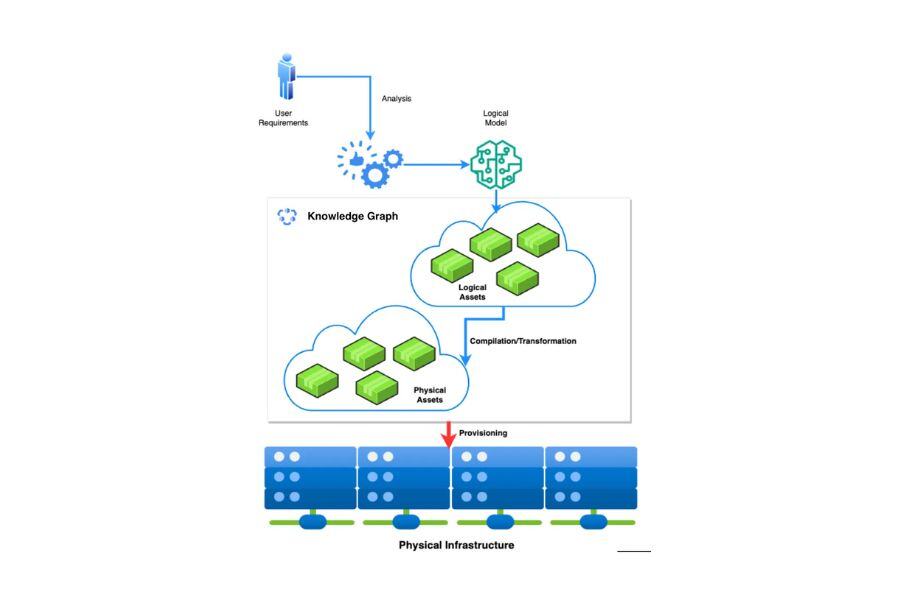
A modern data platform is a complicated mix of technologies. These technologies need to be combined for a good user experience. A data platform is built on top of a layered architecture. Each layer has a specific role:
This layer contains all the platforms for storing data, like data lakes. Most of the time, this layer includes an object storage platform. In a more complex situation, this layer consists of highly specialized platforms like columnar databases, knowledge/property graphs, etc.
This layer contains all the platforms offering ways to transform, query, and analyze data. Platforms like Spark, Flink, Dask, Trino, etc., are in this layer. Plenty of data digesting platforms are out there.
This layer has to contain all the platforms needed for managing the data from different perspectives. This includes security and quality control, metadata management, etc. We could put catalogs, identity management systems, and access control engines in this layer as well.
Putting all those pieces together is a complex task. Double that when providing an excellent user experience to the platform users.
For example, users should be able to explore the available data and their meaning. They should get simple-to-use tools for data manipulation and querying. Power users should be able to access the computational platforms. These enable them to implement more advanced analytics using trained machine learning models.
Everything should be tracked and audited to support regulations like GDPR.
Designing and implementing a data platform is a complex application integration task. Unfortunately, tackling the task is too often tactical. It's based on a brute force approach to technology integration, like starting with a specific technology and then adapting the platform requirements to the technology.
The design of data platforms often lacks an adequate level of abstraction, in general. This approach would make them more resilient to technological changes, like evolving current technologies or simply adding new ones.
Another problem commonly affecting data platforms is the need for more automation. Onboarding new data, changing ownership, or making the data available to someone else is typically manual. Monitoring and rechecking data to enforce high quality both need more automation.
This general lack of automation dramatically decreases the data platform's productivity. The data platform team always needs to catch up, giving data to feed business decisions.
What could a possible strategy be to mitigate all those problems?
The root problem is that the architect doesn’t introduce the right level of abstraction at design time. They cast the data platform architecture on a specific set of technologies. The user requirements are forcefully adapted to the target technology features.
Data engineering, as any software engineering practice, should always start from the business/user requirements. After analyzing, it is necessary to establish a coherent model that can fulfill the user's needs.
The logical model of a data platform is primarily focused on how the data is collected and managed. It mainly describes the data containers. So, a data platform is a collection of managed assets used collectively for storing and managing data.
A list of possible managed assets could be:
All these assets are defined without any specific technology. The assets describe the logical model using metadata. This could mean a list of user defined properties that fulfill the needs.
All the managed assets and their definitions must be stored in a flexible catalog. This catalog should support a simple design process:
The illustration below shows the process and the role these knowledge graphs play.
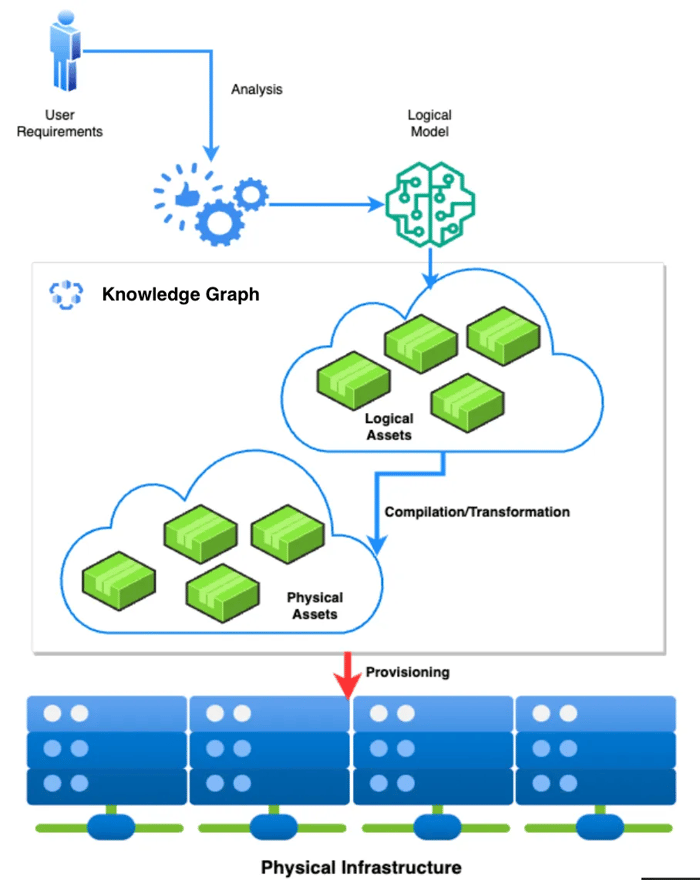
Knowledge graphs supporting this approach should be able to:
The Data Platform Shaper is a highly configurable metadata knowledge graph. It supports the design of complex data platforms with a technology agnostic approach.
Our first implementation uses a knowledge graph, based on RDF technologies, either graphdb or virtuoso. In general, any knowledge graph supporting rdf4j can be used.
We designed our catalog system based on an ontology structured into four layers (L0, L1, L2, L3):
The prototype is available with an Apache 2 open-source license on GitHub.
It’s a micro-service exposing REST APIs. These create traits, relationships among them, user-defined types with their schema, and user-defined types instances.
The README file provides examples for getting the hang of this system. The documentation provides additional examples and describes the internal behavior and APIs.
Let's see how this works through an example.
The L0 ontology layer provides the mechanisms for defining a user-defined type together with a schema:
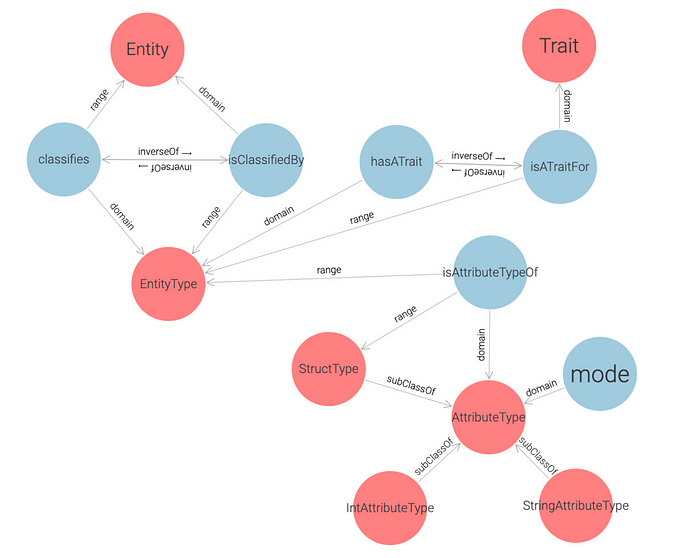
A user-defined type is an instance of EntityType. An EntityType can be associated with one or more Traits. An EntityType associates with AttributeType.
An AttributeType can be StringType, IntType, LongType, etc. We support all the basic types, including date and timestamp.
A particular attribute type is StructType. It can contain other attribute types, which is the mechanism that allows arbitrary nesting levels.
The Mode entity is a listing: Nullable, Repeated, Required. The meaning is obvious. An attribute can be optional, repeated (a list of values), or mandatory.
Using the L0 entities and their relationships, you can define complex nested schemas. These further associate with the user-defined types.
This layer contains a predefined list of possible relationships among Traits. Currently, we provide the hasPart relationship, for example, in this picture:
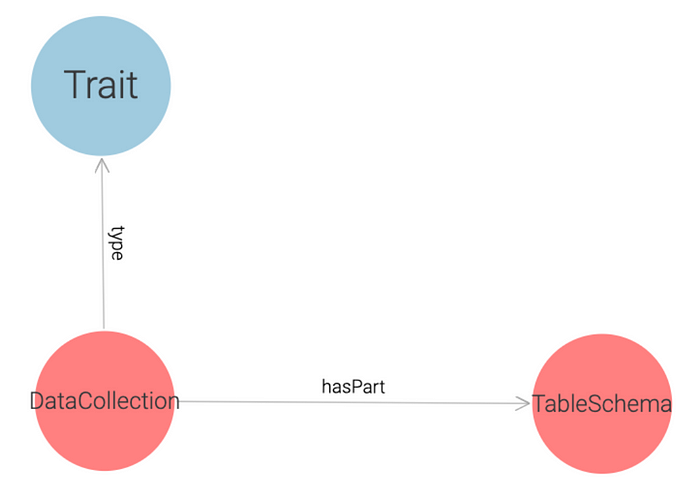
The trait DataCollection links to the TableSchema trait through the hasPart relationship.
Suppose we describe a managed asset called DataCollectionType, which represents a generic data collection. To mark this user-defined type as a data collection, we must associate it with the trait DataCollection.
We build a user-defined type by assembling a name, a schema, and a list of traits. We provide a REST API that accepts a YAML document representing a user-defined type definition:
name: DataCollectionType traits:- DataCollectionschema:- name: name typeName: String mode: Required- name: organization typeName: String mode: Required- name: domain typeName: String mode: Required
This definition generates the following graph:
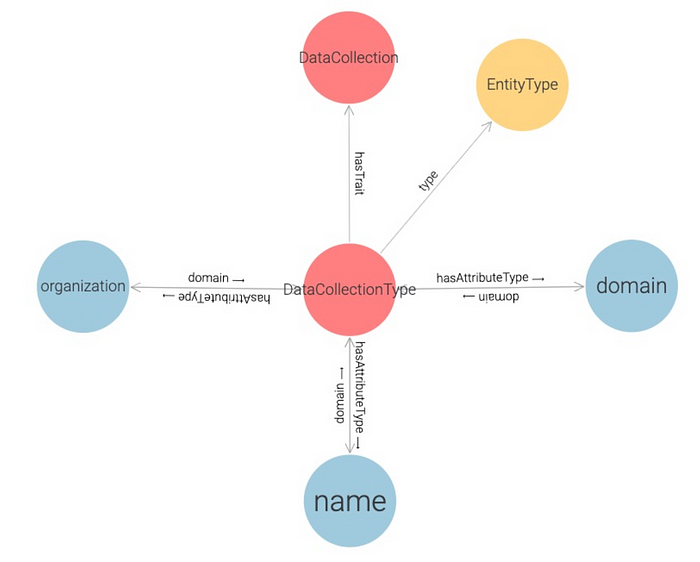
Let’s see a more complex example:
name: TableSchemaType traits:- TableSchemaschema:- name: tableName typeName: String mode: Required- name: columns typeName: Struct mode: Repeated attributeTypes: - name: columnName typeName: String mode: Required - name: columnType typeName: String mode: Required
This example shows a repeated structure and columns, containing two attributes. This definition produces the following graph:
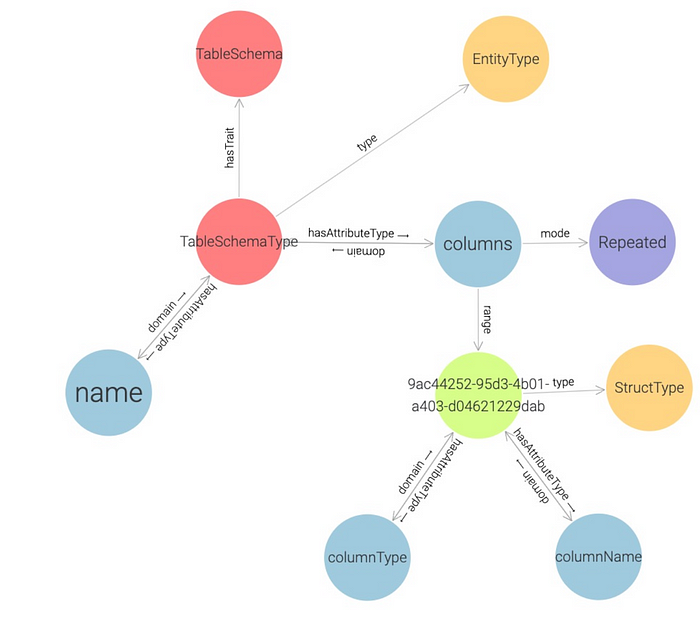
Now that we have the user-defined types described, we can create instances of them. For example, the system provides a REST API accepting a YAML document for instance creation.
Let’s create an instance for the DataCollectionType user-defined type:
entityTypeName: DataCollectionType
values:
name: Person
domain: Registrations
organization: HR
And the corresponding graph:

Now, let’s create an instance of TableSchemaType user-defined type:
entityTypeName: TableSchemaType
values:
name: Person
columns:
- columnName: firstName
columnType: String
- columnName: familyName
columnType: String
- columnName: age
columnType: Int
And the corresponding graph:

An interesting property of the system is that all the instances of the user-defined types with the same traits can link, if a relationship links two traits.
This property is mandatory. For example, two instances can be linked through a relationship, R, only if the two types, T1 and T2, of the two instances are associated with two traits, TR1 and TR, linked by R.
In our example, DataCollection links with TableSchema through the hasPart relationship. Thus, any instance of types associated with those traits links with the same relationship.
This graph shows the link between an instance of DataCollectionType and an instance of TableSchemaType:

We are considering adding a validation mechanism to the system. We want the user to define constraints on the possible values for the instance attributes. We are considering different possibilities, such as integration with CUE or SHACL.
The Data Platform Shaper is a flexible catalog and is still a work in progress. It aims to contain all the information around managed assets that compose a modern data platform.
Our vision is to extend it with new ideas. These will support the process of designing and implementing a modern data platform. The starting point is a pure and technologically agnostic model that moves toward the physical model. This is where the logical data assets map to their physical counterparts.
This article was created from a published research paper. It was presented at the 2023 IEEE International Conference on Big Data.
This project is the result of a collaborative effort of an amazing team:
| Name | Affiliation |
| Diego Reforgiato Recupero | Department of Math and Computer Science, University of Cagliari (Italy) |
| Francesco Osborne | KMi, The Open University (UK) and University of Milano-Bicocca (Italy) |
| Andrea Giovanni Nuzzolese | Institute of Cognitive Sciences and Technologies National Council of Research (Italy) |
| Simone Pusceddu | Department of Math and Computer Science, University of Cagliari (Italy) |
| David Greco | Big Data Laboraty, Agile Lab (Italy) |
| Nicolò Bidotti | Big Data Laboraty, Agile Lab (Italy) |
| Paolo Platter | Big Data Laboraty, Agile Lab (Italy) |
Discover why building an in-house Data Product Management Platform can be costly and inefficient, and explore smarter alternatives for your business.
Discover how to salvage your internal data platform build, preserve your investment, and achieve both speed and compliance with Witboost.
How do we identify Data Products in a Data Mesh environment? Data Product Flow can help you answer that question.